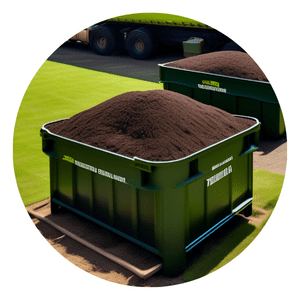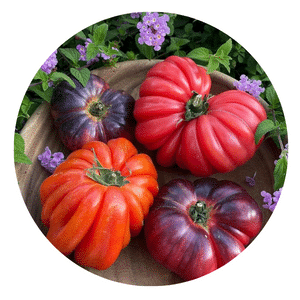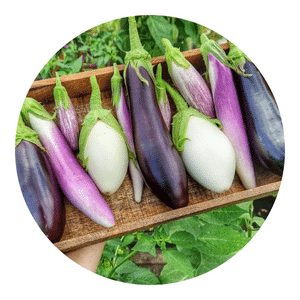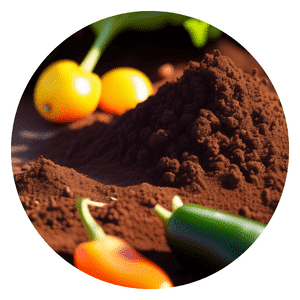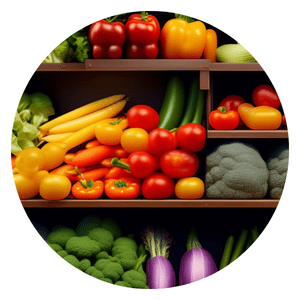How To Grow Jumbo Cantaloupe
Chappy the Gardener, well-known for his extensive knowledge on gardening, has released a new guide on how to grow Jumbo Cantaloupe.
This guide is perfect for those who want to learn how to grow this type of cantaloupe, as it provides clear and concise instructions.
The guide covers everything from seed selection and planting, to care and harvesting.
With Chappy’s guidance, you will be able to grow delicious and juicy Jumbo Cantaloupes in your own home garden.
Jumbo cantaloupes are the biggest and best tasting cantaloupes you can grow.
They typically have a larger fruit than other cantaloupe varieties and are therefore more expensive to purchase.
Jumbo cantaloupes also take longer to mature, so they may not be a good choice for those who want their fruit ready to eat quickly.
However, if you want the biggest and juiciest cantaloupe possible, jumbos are the way to go!
Jumbo Cantaloupe Menu
How To Grow Jumbo Cantaloupe
Choose the right variety: Select a jumbo cantaloupe variety that is suitable for your climate and growing conditions. Look for organic seed options.
Start seeds indoors: Start cantaloupe seeds indoors a few weeks before the last frost date. Use organic seed starting mix and provide adequate light and warmth.
Transplant carefully: When the seedlings have developed a few true leaves, transplant them into organic-rich, well-draining soil in your garden or raised bed.
Provide full sun: Cantaloupes thrive in full sunlight. Ensure they receive at least 6-8 hours of direct sunlight each day.
Maintain consistent moisture: Keep the soil consistently moist but not waterlogged. Avoid overhead watering to minimize the risk of diseases.
Mulch around plants: Apply organic mulch, such as straw or compost, around the base of the plants to help retain moisture, suppress weeds, and regulate soil temperature.
Support the vines: As the cantaloupe vines grow, provide support for the heavy fruits by using trellises, cages, or slings made of natural materials.
Practice proper spacing: Allow enough space between plants to ensure good air circulation and prevent overcrowding. Follow the spacing recommendations provided by the seed packet or plant tag.
Fertilize organically: Use organic fertilizers or amendments, such as compost or well-rotted manure, to provide essential nutrients to the plants. Follow package instructions for application rates.
Monitor for pests: Regularly inspect your plants for pests, such as aphids or cucumber beetles. Use organic pest control methods, like handpicking, companion planting, or natural sprays, to manage infestations.
Hand pollination: Cantaloupes benefit from hand pollination to ensure good fruit set. Gently transfer pollen from the male flowers to the female flowers using a small brush or cotton swab.
Harvest at the right time: Monitor the cantaloupes closely and harvest them when they are fully ripened. Look for a strong aroma, a yellow or beige rind color, and a slight softness at the blossom end.
How do you increase the yield of a cantaloupe?
Adequate Spacing:
Plant cantaloupe vines with enough space between them to allow for proper growth and airflow. Crowded plants can result in reduced yields and increased risk of diseases.
Soil Preparation:
Prepare the soil by incorporating organic matter such as compost or well-rotted manure. This improves soil fertility, drainage, and water retention, providing optimal conditions for plant growth.
Fertilize Appropriately:
Apply a balanced organic fertilizer before planting and throughout the growing season to provide essential nutrients for the plants. Follow the recommended dosage on the fertilizer package.
Water Consistently:
Maintain consistent soil moisture throughout the growing season, especially during dry periods. Water deeply and avoid allowing the soil to dry out completely, as this can lead to reduced yields.
Mulch:
Apply a layer of organic mulch around the base of the plants to conserve soil moisture, suppress weeds, and regulate soil temperature. This helps create favorable conditions for increased fruit production.
Prune and Train Vines:
Train the cantaloupe vines to grow on a trellis or support system. Prune excessive side shoots and limit the number of fruits per vine to redirect energy towards fewer but larger and more productive fruits.
Hand Pollination:
Assist with pollination by hand if pollinators are limited in your area. Use a small brush or cotton swab to transfer pollen from male to female flowers, promoting fruit set.
Monitor Pests and Diseases:
Regularly inspect your plants for common pests and diseases that can reduce yields. Implement organic pest control methods and take prompt action if issues arise.
Monitor Nutrient Levels:
Periodically test the soil to monitor nutrient levels. Adjust fertilization as needed based on the test results to ensure the plants have adequate nutrition for optimal growth and fruit development.
Timely Harvesting:
Harvest cantaloupes at the appropriate stage of ripeness to encourage further fruit production. Promptly remove ripe fruits from the vine to allow the plant to focus energy on developing new fruits.
Is it better to grow cantaloupe on the ground or trellis?
Growing on the Ground:
Space Requirement:
Cantaloupe vines can spread over a large area when grown on the ground. If you have ample space in your garden, allowing the vines to sprawl on the ground is a convenient option.
Fruit Support:
When grown on the ground, the fruit is supported by the soil, reducing the risk of damage from hanging on a trellis. This can be particularly beneficial for larger or heavier fruit varieties.
Disease Prevention:
The leaves of cantaloupe plants provide shade and help suppress weeds when allowed to spread on the ground. This can help reduce the risk of diseases caused by excessive moisture or contact with contaminated surfaces.
Growing on a Trellis:
Space Optimization:
Growing cantaloupes on a trellis can save valuable garden space, especially if you have limited room. The vines are trained to grow vertically, allowing you to utilize vertical space more efficiently.
Enhanced Airflow:
When grown on a trellis, the cantaloupe vines have better airflow around the foliage, reducing the risk of diseases like powdery mildew. Increased airflow can also improve pollination success.
Cleaner Fruits:
By elevating the fruit off the ground, trellis-grown cantaloupes are less likely to come into contact with soil, reducing the chance of soil-borne diseases or fruit rot.
Oh Grow Jumbo Cantaloupe, In the summer sun you cope. From tiny seeds you sprout, To fill our hearts with joy, no doubt. Your vibrant orange skin and sweet scent, A taste that’s heaven-sent. With each bite, a burst of flavor, A fruit so divine, we will savor.
Chappy The Gardener
What is the best organic fertilizer for cantaloupe?
There are several organic fertilizers that can provide the necessary nutrients for growing healthy cantaloupes. Here are some options to consider:
Compost is a valuable organic fertilizer that improves soil structure and provides a wide range of nutrients. It can be applied to the soil before planting or used as a side dressing during the growing season.
Manure from organic sources, such as cow or chicken manure, can be an excellent fertilizer for cantaloupes. Ensure that the manure is well-aged and composted to avoid the risk of burning the plants.
Fish emulsion is a liquid organic fertilizer made from fish waste. It is high in nitrogen and other essential nutrients. Dilute fish emulsion with water and apply it to the soil around the base of the cantaloupe plants.
Bone meal is a slow-release fertilizer derived from animal bones. It is rich in phosphorus, which promotes root development and fruiting. Mix bone meal into the soil before planting or apply it as a side dressing.
Blood meal is another organic fertilizer high in nitrogen. It can help promote vigorous vegetative growth in cantaloupe plants. Apply blood meal sparingly and follow the package instructions for proper application rates.
Seaweed or kelp extracts are organic fertilizers that provide a wide range of micronutrients and growth-stimulating compounds. They can be applied as a foliar spray or mixed into the soil.
What month do you plant cantaloupe?
The ideal time to plant cantaloupe depends on your specific location and climate.
In general, cantaloupe is a warm-season crop that requires consistently warm temperatures for successful growth.
Here are some guidelines for planting cantaloupe:
Soil Temperature:
Cantaloupe seeds should be planted when the soil temperature has reached around 65 to 85°F (18 to 29°C). The soil should be warm and not too cool to promote germination and healthy plant growth.
Last Frost Date: Check the average date of the last frost in your area. Cantaloupe plants are sensitive to frost, so it’s crucial to wait until the danger of frost has passed before planting them outdoors.
Spring Planting: In most regions, cantaloupe is typically planted in the spring after all frost risks have passed. This is usually between late April and early June, depending on your specific location. Monitor the soil and air temperatures before planting.
Seedlings or Direct Sowing:
Cantaloupe can be grown from seedlings started indoors and transplanted into the garden or directly sown into the garden soil. Starting seeds indoors 2 to 4 weeks before the intended planting date can help get a head start on the growing season.
Soil Preparation: Prepare the soil by incorporating organic matter, such as compost, into the planting area. Ensure the soil is well-draining, as waterlogged soil can lead to disease and poor growth.
Spacing: When planting cantaloupe, provide adequate spacing between plants, typically about 3 to 5 feet apart, to allow for proper airflow and growth.
Can you grow Cantaloupe hydroponically
Yes, it is possible to grow cantaloupe hydroponically.
Hydroponic systems provide a controlled environment where plants receive water, nutrients, and support without the use of soil.
Here are some tips for growing cantaloupe hydroponically:
Select the Right Variety: Choose a cantaloupe variety that is suitable for growing in hydroponic systems. Look for compact or bushy varieties that are well-suited for container growing.
Hydroponic System: There are different types of hydroponic systems you can use, such as nutrient film technique (NFT), deep water culture (DWC), or drip irrigation. Select a system that works best for your space, resources, and needs.
pH and Nutrient Solution: Maintain the proper pH level of the nutrient solution for cantaloupe, which is typically between 6.0 and 6.5. Use a balanced hydroponic nutrient solution formulated for fruiting plants and follow the manufacturer’s instructions for dilution and application.
Temperature and Lighting: Provide optimal temperature and lighting conditions for cantaloupe growth. Cantaloupes prefer warm temperatures around 75 to 85°F (24 to 29°C). Supplemental lighting may be necessary to ensure sufficient light levels for proper growth, especially in indoor hydroponic setups.
Trellising and Support: Cantaloupe vines can become heavy and require support to prevent them from drooping or breaking. Install trellises or other support structures to train the vines and help distribute the weight of the fruit.
Pollination: Cantaloupes require pollination for fruit set. In hydroponic systems, hand pollination is often necessary. Use a small brush or cotton swab to transfer pollen from male flowers to female flowers, ensuring proper pollination and fruit development.
Pruning and Training: Regularly prune and train the cantaloupe plants to control their growth and encourage better airflow. Remove excessive foliage and side shoots to prevent overcrowding and disease development.
Watering and Nutrient Management: Monitor the water and nutrient levels in the hydroponic system closely. Adjust the nutrient solution strength and pH as needed, and ensure proper drainage to prevent waterlogged roots.
Harvesting: Harvest the cantaloupes when they are fully ripe. The fruits should have a pleasant aroma and easily separate from the vine when gently twisted.
Crop Rotation: Practice crop rotation in your hydroponic system to prevent disease buildup and maintain overall plant health. Avoid planting cantaloupes or other melons in the same system consecutively.
Can you grow cantaloupe in a greenhouse
Yes, cantaloupe can be successfully grown in a greenhouse.
Growing cantaloupes in a greenhouse provides a controlled environment that can extend the growing season and protect the plants from adverse weather conditions.
Here are some tips for growing cantaloupe in a greenhouse:
Variety Selection: Choose a cantaloupe variety that is suitable for greenhouse growing. Look for varieties that are known for their compact size, early maturity, and disease resistance.
Temperature and Ventilation: Maintain optimal temperature and ventilation inside the greenhouse. Cantaloupes thrive in warm temperatures between 75 and 85°F (24 to 29°C) during the day and slightly cooler temperatures at night. Adequate ventilation is essential to prevent heat buildup and humidity-related issues.
Soil and Drainage: Use a well-draining, nutrient-rich soil mix suitable for greenhouse cultivation. Ensure proper drainage to avoid waterlogging, which can lead to root rot and other diseases.
Trellising: Consider using trellises or vertical support systems to train the cantaloupe vines upward. This helps maximize space utilization and improves air circulation, reducing the risk of disease.
Pollination: Since the greenhouse environment limits natural pollination by insects, manual pollination may be required. Use a small brush or cotton swab to transfer pollen from male flowers to female flowers. Gently brush the inside of the female flower to ensure successful pollination.
Watering and Fertilization: Provide consistent watering to keep the soil evenly moist but not waterlogged. Use a drip irrigation system or water at the base of the plants to avoid wetting the foliage. Regularly fertilize the plants with a balanced organic fertilizer according to the recommended application rates.
Pruning and Training: Regularly prune the cantaloupe plants to remove excessive foliage and redirect the energy towards fruit production. Train the vines to follow the trellis or support structure, promoting better airflow and even fruit ripening.
Pest and Disease Management: Monitor the plants regularly for common pests and diseases in the greenhouse. Implement integrated pest management strategies and use organic pest control methods as needed.
Harvesting: Harvest the cantaloupes when they are fully ripe. This is usually indicated by a sweet aroma, a slight softening of the blossom end, and easy separation from the vine. Cut the fruits carefully to avoid damaging the vine or other fruits.
Crop Rotation: Practice crop rotation in the greenhouse to prevent the buildup of pests and diseases. Avoid planting cantaloupes or other related crops in the same area consecutively.
What temperature does cantaloupe grow best in?
Cantaloupes, also known as muskmelons, thrive in warm temperatures.
The ideal temperature range for growing cantaloupes is between 70 and 85°F (21 and 29°C).
However, they can tolerate temperatures as low as 60°F (15°C) and as high as 95°F (35°C) for short periods.
Here are some temperature guidelines for cantaloupe growth:
Germination: Cantaloupe seeds require a soil temperature of around 70°F (21°C) for successful germination. You can use a seedling heat mat or start the seeds indoors in a warm location to provide the necessary warmth during the germination stage.
Seedling Stage: Once the seeds have germinated and the seedlings have emerged, they should be kept in an environment with temperatures around 70 to 75°F (21 to 24°C) during the day and slightly cooler at night.
Flowering and Fruit Development: As the plants grow and begin to flower, temperatures between 75 and 85°F (24 to 29°C) are optimal for proper pollination and fruit set. High temperatures above 95°F (35°C) can interfere with pollination and lead to poor fruit development.
Ripening: During the ripening stage, cantaloupes benefit from warm temperatures. They continue to ripen even after being harvested, so storing them at room temperature (around 70 to 75°F or 21 to 24°C) helps enhance the flavor and sweetness.
It’s important to note that cantaloupes may exhibit some heat stress symptoms, such as reduced fruit quality or sunburnt patches, when exposed to extremely high temperatures for extended periods.
Providing shade, mulching the soil, and ensuring proper watering can help mitigate the effects of excessive heat.
In conclusion, growing jumbo cantaloupe can be a rewarding and satisfying experience for any gardener.
By following the proper techniques and providing the necessary care, it is possible to produce large, juicy fruits that are bursting with flavor.
From choosing the right variety to providing ample water and nutrients, every step in the process contributes to the success of growing jumbo cantaloupe.
So why wait?
Start planning your garden today and enjoy the delicious taste of homegrown jumbo cantaloupe all summer long!
Click To Grow
Helps Us Grow – Share If You Like




